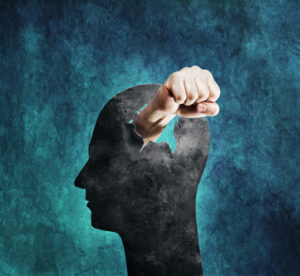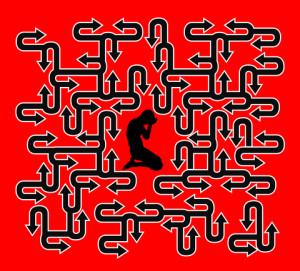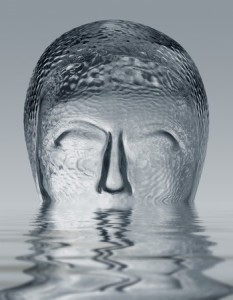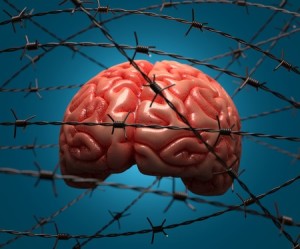Listening to Antidepressants

Prozac took the U.S. by storm when the FDA approved it in 1987. It also had a similarly radical effect on the thinking of a forty year-old psychiatrist named Peter Kramer. In the Introduction of his now classic book, Listening to Prozac, Kramer described how people became “better than well” with Prozac and how they and he began to “listen” to what Prozac told them. Kramer said it “transformed my views about what makes people the way they are.” But even by 1993, when Listening to Prozac was published, the stories of violence and suicide after taking the first SSRI antidepressant were circulating as well.
Toxic Psychiatry by another psychiatrist named Peter Breggin, was published two years earlier and documented reports of suicidal behavior in both the popular press and the professional literature. “Suicidal Behavior Tied to Drug,” was published on February 7, 1991 in The New York Times. The article said two cases of suicidal behavior and fantasies (with no prior history) were reported in The New England Journal of Medicine that same day. Eli Lilly was facing more than 50 lawsuits at the time and of course denied that there was any scientific merit to the claim the medication could prompt suicidal or violent acts. The year before, “Emergence of Intense Suicidal Preoccupation During Fluoxetine Treatment,” was published in the February 1990 issue of The American Journal of Psychiatry. Its abstract read:
Six depressed patients free of recent serious suicidal ideation developed intense, violent suicidal preoccupation after 2-7 weeks of fluoxetine treatment. This state persisted for as little as 3 days to as long as 3 months after discontinuation of fluoxetine. None of these patients had ever experienced a similar state during treatment with any other psychotropic drug.
Breggin also seems to have predicted the rise of what is now called “treatment resistant depression” with SSRIs. He said: “If Prozac can indeed alleviate depression by making more serotonin available in the brain, then with time it may produce incurable depression by making the brain relatively unresponsive to any amount of serotonin.” In Talking Back to Prozac in 1995, Breggin “blew the whistle” on the newer antidepressants and antidepressant-induced violence, suicide and mania. Finally in 2004 the FDA finally required black box warnings to be placed on the newer antidepressants, warning of the potential for the increased risk of suicidal thoughts and behavior in children and adolescents.
Yes, Dr. Kramer did say as far back as Listening to Prozac that the chemical imbalance theory (the amine hypothesis) was at least incomplete and perhaps false. But then Kramer published Against Depression in 2005, arguing that the socio-economic costs of depression were so large, that modern societies should strive to eradicate it as they did with smallpox. On his blog in 2008 he argued that the chemical imbalance theory was prematurely declared dead, even though “the neurotransmitter theory is incomplete and not fully proven.” He asserted that since 1993 the evidence for it had been steadily growing.
Jonathan Leo and Jeffrey Lacasse did an in depth critique of the evidence Dr. Kramer used to support the chemical imbalance theory. They noted several qualifications used when scientists discuss the biological basis of mood with other scientists. “Yet, in the popular press all these qualifications disappear and instead the public is inundated with declarations about ‘chemical imbalances causing mental illness.’” They said there were two different discussions going on about the theory—a simple, straightforward one in the media and advertisements, but a tenuous nuanced one in scientific circles. In scientific circles, the discussion was about the appropriateness of using the chemical imbalance theory with patients and not so much about the strength of the theory.
In the late 1990s, Irving Kirsch decided to research the placebo effect with the newer (SSRIs and SNRIs) antidepressants. He began with the assumption that there actually was a therapeutic effect with antidepressants, but he wanted to assess the placebo effect: “I was not particularly interested in the drug effect. I assumed that antidepressants were effective.” He was surprised to discover how small the drug effect was. Seventy-five percent of the improvement in the drug group also occurred with people who were given placebo pills with no active ingredient in them.
Critics of his findings said the meta-analysis he and his co-author had done was biased; that they had an unrepresentative sample of clinical trials. So Kirsch and three others replicated the original study with the identical data set used by the pharmaceutical companies for the FDA approval of six of the new generation antidepressants at the time. These six accounted for the bulk of antidepressant prescriptions being written at the time, 2002. “In the data sent to us by the FDA, only 43% of the trials showed a statistically significant benefit of drug over placebo. The remaining 57% were failed or negative trials.” The results here were that 82% of the response to antidepressants was due to the placebo effect.
Kirsch again did a replication in 2008 with a larger number of clinical trials and again found the 82% placebo effect. In both analyses, the mean difference between drug and placebo was less than two points (1.8) on the HAM-D depression scale, used in all the FDA clinical trials for antidepressants at the time. The difference was clinically insignificant. In other words, these miniscule differences were too small to be observable in a normal clinical setting with someone who was depressed. Others, including the FDA, have repeatedly replicated their results. The above history can be found in a 2014 article by Irving Kirsch, “Antidepressants and the Placebo Effect,” or in his 2010 book, The Emperor’s New Drugs. There he speculated:
Antidepressants may be nothing more than active placebos, producing side effects through chemical means and therapeutic effects through psychological means.
Twenty-three years after Listening to Prozac, Peter Kramer published his latest book, Ordinarily Well: The Case for Antidepressants. According to Jonathan Rosen, who wrote “The Assault on Antidepressants” for The Atlantic, Kramer said he believed in the utility of antidepressants, despite their flaws. He not only sought to make a case for antidepressants, he also tried to make a case for psychiatry as “a humanistic science that bridges the impersonal ideals of the laboratory and the pragmatic exigencies of clinical intervention.”
In a book review of Ordinarily Well for The New York Times, Jennifer Senior referred to the original Kirsch research and said Kramer was wary of these studies because they flew in the face of his clinical experience. Indicating that when his own patients asked if their improved mood could be due to a placebo effect, “Dr. Kramer’s answer is an unequivocal no.” And Ordinarily Well attempted to prove his belief. Senior indicated Kramer argued that Kirsch deliberately “’seemed to cull studies in which antidepressants underperformed,’ and treated some drugs as placebos even though they may have had antidepressant effects.” Either Senior or Kramer was unaware of, or failed to mention the above-described replications done by Kirsch and others. She did point out how Kramer used meta-analyses to make his own points, but failed to acknowledge that fact. Another area of concern for Kramer was the mechanism for recruiting subjects for clinical trials.
He is particularly devastating on the subject of recruiting test subjects. One of the most damning chapters features an unnamed facility where antidepressant trials are frequently conducted. Many of the participants are unemployed or underemployed — lonely, dispossessed and eager for the money. Suddenly, they’re getting paid, interacting with others and receiving the careful attention of doctors and nurses. “Even on placebo,” Dr. Kramer writes, “these patients ought to get better.”
There is an indication that evidence-based medicine has some flaws; and that the gold standard of meta-analysis can be undermined by flawed analysis, especially in psychiatric drug research. And there really is a problem with recruiting clinical trials subjects; and sometimes with the methodologies used by researchers in those clinical trials. But remember that if Kramer’s concerns are accepted (and I think they should be), then the newer antidepressants were approved using questionable scientific methods and an unreliable approval process. See “Evidence-Based Treatment … Lacks Evidence.”
If that is the case, where is the protection that FDA approval of pharmaceuticals is supposed to provide? And why aren’t more people pressing for regulatory reform of the FDA clinical trial process? If we accept Kramer’s arguments, we should also acknowledge that the clinical trials used for FDA approval of SSRIs were invalid. Kramer’s rationale for dismissing the evidence for the placebo effect with antidepressants also calls into question the methods used for their approval—and many of the studies afterwards touting their continued effectiveness.
A recent review article by Andrews et al., “Is Serotonin a Downer or an Upper?” challenged the assumptions of the therapeutic effects of SSRIs. “Although the idea that a single neurochemical is the cause of depression is now considered simplistic, the low serotonin hypothesis still lies at the foundation of most research on depression.” The authors noted how many types of depression seem to correspond to higher levels of serotonin, not lower ones. They proposed a radical new way of understanding the role of serotonin in the brain, according to Shannon Peters in, “How Do Antidepressant Really ‘Work’?” They suggest that serotonin coordinates metabolic processes with the storage, mobilization, distribution, production and utilization of energy resources.
Under this theory, there are higher levels of serotonin when there is a need to redistribute limited energy resources. “Serotonin cannot be simply described as an ‘upper’ or a ‘downer’; its symptomatic effects depend on the organism’s state,” write the authors.
When listening to antidepressants, we hear a history of effectiveness that can’t be clearly attributed to the therapeutic effect of the drugs. Expectation or placebo plays a significant role in whether or not these drugs will help an individual “overcome” their depression. Peter Kramer continues to hold on to a narrative that the chemical properties of SSRIs actually do help some depressed individuals, with “little of the benefit coming from the classical placebo effect.” But in debunking the science used to affirm the antidepressant placebo effect, he also calls into question the methods used to approve those same SSRIs in the first place.
What about Peter Breggin? He’s still around and critiquing the use of other classes of psychiatric drugs as well as antidepressants. He was recently the expert witness in a 2016 court case, awarding $11.9 million in a Paxil suicide malpractice case. He has a video series on YouTube, “Simple Truths About Psychiatry,” which is also linked on his website: breggin.com. There is plenty of additional material there to support the ineffectiveness and danger of antidepressants. In 2011, Dr. Breggin was the expert witness in a court case where Prozac was found to be a contributing factor to the murder of a teenager by his friend. “This was the first criminal case in North America where a judge has specifically found that an antidepressant was the cause of a murder.”
There’s more discussion of Irving Kirsch and the placebo effect here on my website. Start with: “Dirty Little Secret” or do a search of the website for his name.









